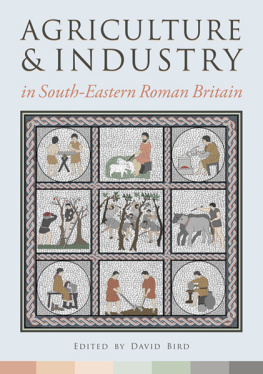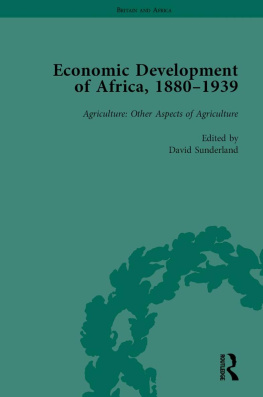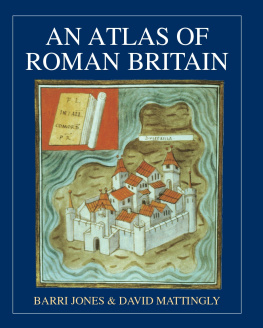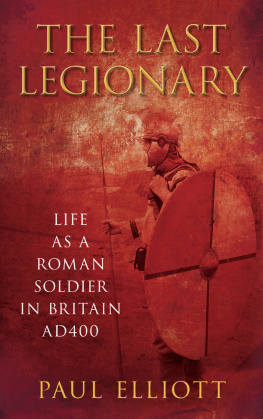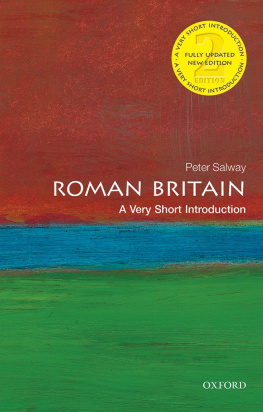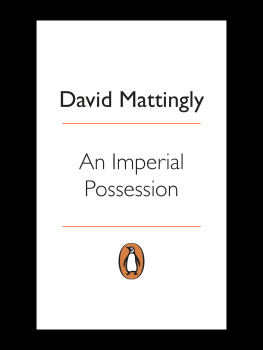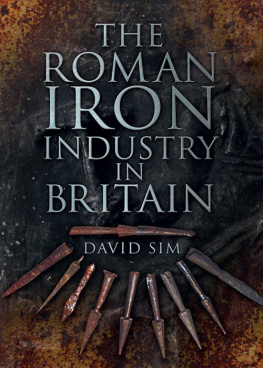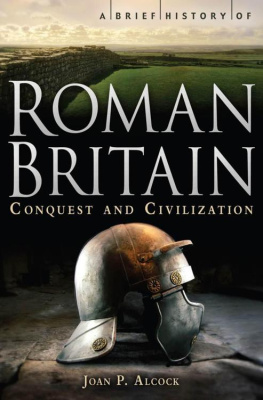Bird David - Agriculture and Industry in South-Eastern Roman Britain
Here you can read online Bird David - Agriculture and Industry in South-Eastern Roman Britain full text of the book (entire story) in english for free. Download pdf and epub, get meaning, cover and reviews about this ebook. year: 2016, publisher: Oxbow Books, Limited, genre: Home and family. Description of the work, (preface) as well as reviews are available. Best literature library LitArk.com created for fans of good reading and offers a wide selection of genres:
Romance novel
Science fiction
Adventure
Detective
Science
History
Home and family
Prose
Art
Politics
Computer
Non-fiction
Religion
Business
Children
Humor
Choose a favorite category and find really read worthwhile books. Enjoy immersion in the world of imagination, feel the emotions of the characters or learn something new for yourself, make an fascinating discovery.
- Book:Agriculture and Industry in South-Eastern Roman Britain
- Author:
- Publisher:Oxbow Books, Limited
- Genre:
- Year:2016
- Rating:3 / 5
- Favourites:Add to favourites
- Your mark:
- 60
- 1
- 2
- 3
- 4
- 5
Agriculture and Industry in South-Eastern Roman Britain: summary, description and annotation
We offer to read an annotation, description, summary or preface (depends on what the author of the book "Agriculture and Industry in South-Eastern Roman Britain" wrote himself). If you haven't found the necessary information about the book — write in the comments, we will try to find it.
Bird David: author's other books
Who wrote Agriculture and Industry in South-Eastern Roman Britain? Find out the surname, the name of the author of the book and a list of all author's works by series.
Agriculture and Industry in South-Eastern Roman Britain — read online for free the complete book (whole text) full work
Below is the text of the book, divided by pages. System saving the place of the last page read, allows you to conveniently read the book "Agriculture and Industry in South-Eastern Roman Britain" online for free, without having to search again every time where you left off. Put a bookmark, and you can go to the page where you finished reading at any time.
Font size:
Interval:
Bookmark:

Published in the United Kingdom in 2017 by
OXBOW BOOKS
10 Hythe Bridge Street, Oxford OX1 2EW
and in the United States by
OXBOW BOOKS
1950 Lawrence Road, Havertown, PA 19083
Oxbow Books and the individual contributors 2017
Paperback Edition: ISBN 978-1-78570-319-5
Digital Edition: ISBN 978-1-78570-320-1 (epub)
Digital Edition: ISBN 978-1-78570-321-8 (kindle)
Digital Edition: ISBN 978-1-78570-322-5 (pdf)
A CIP record for this book is available from the British Library
Library of Congress Cataloging-in-Publication Data
Names: Bird, D. G. (David G.), editor of compilation.
Title: Agriculture and industry in south-eastern Roman Britain / edited by David Bird.
Description: Oxford; Philadelphia: Oxbow Books, 2016. | Includes bibliographical references.
Identifiers: LCCN 2016044907 (print) | LCCN 2016047110 (ebook) | ISBN 9781785703195 (paperback) | ISBN 9781785703201 (ePub) | ISBN 9781785703201 (epub) | ISBN 9781785703218 (mobi) | ISBN 9781785703225 (pdf)
Subjects: LCSH: Weald, The, Region (England)--Antiquities, Roman. | Kent (England)--Antiquities, Roman. | Surrey (England)--Antiquities, Roman. | Sussex (England)--Antiquities, Roman. | Romans--England--Weald, The--History. | Agriculture, Ancient--England--Weald, The, Region. | Industrial archaeology--England--Weald, The, Region.
Classification: LCC DA147.W532 A47 2016 (print) | LCC DA147.W532 (ebook) | DDC 338.09362/2--dc23
LC record available at https://lccn.loc.gov/2016044907
All rights reserved. No part of this book may be reproduced or transmitted in any form or by any means, electronic or mechanical including photocopying, recording or by any information storage and retrieval system, without permission from the publisher in writing.
Printed in the United Kingdom by Hobbs the Printers
For a complete list of Oxbow titles, please contact:
UNITED KINGDOM | UNITED STATES OF AMERICA |
Oxbow Books is part of the Casemate Group
Front cover: Stylised mosaic of agricultural and industrial activity based mostly on representations from the 2nd and 3rd centuries in the north-western Roman provinces. Illustration by Lyn Spencer.
Contents
Michael Fulford and Martyn Allen
Petra Dark
David Bird
Paul Booth
David Rudling
David Bird
Gill Campbell
Chris Green
Mark Maltby
Edward Biddulph
Jackie Keily and Quita Mould
Nina Crummy
Jeremy Hodgkinson
Ian Scott
Justine Bayley
Louise Rayner
Ian M. Betts
List of Figures
.
: |
: |
List of Tables
). |
Contributors
MARTYN ALLEN, PhD, Department of Archaeology, School of Archaeology, Geography and Environmental Science, University of Reading, Whiteknights, PO Box 227, Reading RG6 6AB; .
JUSTINE BAYLEY, BSc, MSc, PhD, FSA, Howcroft, High Street, Harmondsworth, Middx UB7 0AQ; .
IAN BETTS, PhD, Museum of London Archaeology, Mortimer Wheeler House, 46 Eagle Wharf Road, London N1 7ED; .
EDWARD BIDDULPH, BA, MA, FSA, MCIfA, Oxford Archaeology, Janus House, Osney Mead, Oxford, OX2 0ES; .
DAVID BIRD, BA, PhD, FSA, 14 Kings Road, Guildford, Surrey, GU1 4JW; .
PAUL BOOTH, BA, FSA, MCIfA, Oxford Archaeology, Janus House, Osney Mead, Oxford OX2 0ES; .
GILL CAMPBELL, MSc, Historic England, Fort Cumberland, Portsmouth, PO4 9LD .
NINA CRUMMY, MA, 2 Hall Road, Copford, Colchester, Essex, CO6 1BN; .
PETRA DARK, MA, DPhil, Department of Archaeology, School of Archaeology, Geography and Environmental Science, University of Reading, Whiteknights, PO Box 227, Reading RG6 6AB; .
PROFESSOR MICHAEL FULFORD, CBE, FBA, Department of Archaeology, School of Archaeology, Geography and Environmental Science, University of Reading, Whiteknights, PO Box 227, Reading RG6 6AB; .
CHRIS GREEN, FSA, 44 Blandford Rd St Albans, Herts UK AL1 4JR; .
JEREMY HODGKINSON, MA, FSA, 3, Saxon Road, Worth, Crawley, RH10 7SA; .
JACKIE KEILY, MA, FSA, Department of Archaeology Collections, Museum of London; .
MARK MALTBY, MA, PhD, FSA, Faculty of Science and Technology, Bournemouth University, Christchurch House, Talbot Campus, Fern Barrow, Poole, BH12 5BB; .
QUITA MOULD, MA, FSA, Barbican Research Associates, 51 Whin Common Road, Denver, Downham Market, Norfolk, PE38 0DX; .
DAVID RUDLING, BSc, MA, PhD, FSA, MCIfA, Sussex School of Archaeology, Mays Farm, Polegate, East Sussex, BN26 6TS; .
LOUISE RAYNER, BA, MSc, FSA, Archaeology South-East, 2 Chapel Place, Portslade, BN41 1DR; .
IAN R SCOTT, BA, Oxford Archaeology, Janus House, Osney Mead, Oxford OX2 0ES .
Editors Foreword
David Bird
This book offers an up-to-date assessment of our knowledge of rural settlement, agriculture and industry in and around the three counties to the south of Roman London. It had its origins in a series of conferences set up by the Roman Studies Group of Surrey Archaeological Society, one of several active groups and committees in that Society. The Group was established in 2004, since when it has been responsible for a successful fieldwork programme that has added a great deal to our knowledge of Surrey in the Roman period.
The biennial conferences were initiated by Edward Walker, starting with the subject of water in southern Roman Britain in 2008. Thanks to Edwards hard work and persistence, the event was a great success and set a high standard of well-qualified speakers, which has been continued in subsequent meetings. Two of these conferences, also organised by Edward, tackled the themes first of food and agriculture, and then industry. It was felt appropriate to publish the proceedings and the talks given at these two meetings form the core of this book. Additional specialist papers were commissioned to tackle subjects not covered in the original programmes.
The merest glance at countrywide distributions of Roman rural settlement (e.g. Taylor 2007, 24, fig. 4.1, 34, fig. 4.9) shows how at this scale the broad sweep of British geology is instantly apparent. It should be abundantly clear that Britain has regions that are essentially the result of the underlying geology and other factors such as climate. Yet this is not always seen as an important contributor to the recognisably different communities in Roman Britain which are becoming more obvious through recent studies of the distribution of categories of finds (see e.g. Crummy and Eckardt 2003 and other papers mentioned therein).
The aim of the conferences has always been to focus where possible on the South-East, by which is meant here especially the ancient counties of Kent, Surrey and Sussex (nowadays split into East and West Sussex), the counties surrounding the Weald. They have a strongly marked character of their own that has survived remarkably well in the face of ever-increasing population pressure. Nevertheless, the region is of course not isolated and there are strong links into nearby counties, including across the Thames estuary and indeed much further by sea. The nature of the subsoils and other factors often affects the survival of environmental evidence in the region and therefore some of our papers have also had to range more widely to aid discussion.
Next pageFont size:
Interval:
Bookmark:
Similar books «Agriculture and Industry in South-Eastern Roman Britain»
Look at similar books to Agriculture and Industry in South-Eastern Roman Britain. We have selected literature similar in name and meaning in the hope of providing readers with more options to find new, interesting, not yet read works.
Discussion, reviews of the book Agriculture and Industry in South-Eastern Roman Britain and just readers' own opinions. Leave your comments, write what you think about the work, its meaning or the main characters. Specify what exactly you liked and what you didn't like, and why you think so.

